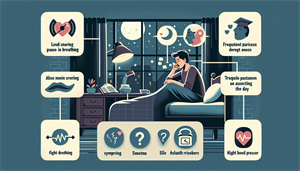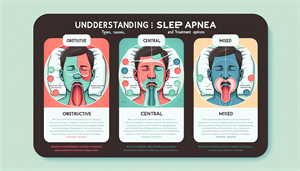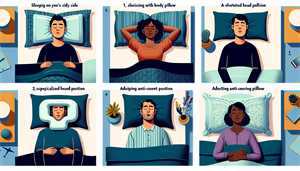
The Lethal Potential of Sleep Apnea
Sleep apnea is not just a matter of noisy snoring or daytime fatigue; it can have serious health implications. The disorder can lead to conditions such as heart disease, high blood pressure, and even sudden cardiac death.
Imagine, a person could literally die from sleep apnea if left untreated. Prompt recognition and treatment of this sleep disorder is essential.
Individuals with severe obstructive sleep apnea who are over 60 years of age, exhibit very low oxygen levels, or have more severe apnea face a particularly high risk of sudden death.
This highlights the importance of closely monitoring and managing these risk factors. In fact, untreated sleep apnea can increase the mortality rate by up to 4.3 times compared to the average population. Let’s further explore these risks.
The Link Between Sleep Apnea and Sudden Cardiac Death
Cardiovascular disease is a leading cause of death worldwide, and sleep apnea is a significant contributor to this grim statistic.
The link between obstructive sleep apnea and sudden cardiac death is not fully understood, but the risk of sudden cardiac events is significantly increased in individuals with this condition. Those with severe sleep apnea, particularly in cases of obstructive sleep apnea, face an elevated risk of all-cause mortality, especially from cardiovascular disease.
Clearly, sleep apnea should not be taken lightly. What, however, escalates the danger in severe cases of sleep apnea?
Severe OSA and Its Dire Consequences
When people with sleep apnea experience falling asleep, they repeatedly stop breathing, sometimes hundreds of times a night. In severe cases of obstructive sleep apnea, these breathing interruptions can happen 30 or more times per hour.
This can lead to serious repercussions, such as: a higher risk of sudden death, especially in older individuals and those with preexisting health conditions increased risk of heart attack and stroke daytime sleepiness and fatigue difficulty concentrating and memory problems mood changes and irritability decreased quality of life It is important for individuals with mild sleep apnea to seek treatment to manage their condition and reduce these risks, which can also help prevent sleep apnea from worsening.
Unveiling Sleep Apnea: Types and Definitions
Sleep apnea is not a one-size-fits-all condition. There are three main types: obstructive sleep apnea, central sleep apnea, and complex sleep apnea. Each type has its own set of characteristics and risks associated with it.
Recognizing the Symptoms of Sleep Apnea
The first step towards getting the necessary help is to identify the symptoms of sleep apnea. Key indicators of this condition include: Loud snoring Gasping for air at night Excessive daytime sleepiness Fatigue These symptoms should prompt immediate consultation with a sleep medicine specialist for timely diagnosis and treatment.


